Since my Shelf-Top Modules are reliant on KATO Unitrack, the logical ballast medium was KATO's own product. Unitrack, as most are familiar, is KATO's track product, with built-in roadbed under the track. The roadbed is a flecked gray color, and KATO's ballast is color matched to be nearly indistinguishable from the molded plastic base.
That said, KATO's ballast has a few shortcomings:
- It's pricey, going for about a buck an ounce. If one is doing anything more than a few feet of right-of-way, the number of little baggies of the product (and the attendant price) will add up quickly.
- It has the unfortunate characteristic of appearing "glittery", even after a liberal application of matte medium. While a perfect match color-wise, there's something about the stuff that gives it that fairytale look that takes a lot of effort to subdue.
I had tried other products, but wasn't really too impressed. In some cases, not only was the color very clearly wrong, I seemed to be trading pixie dust for kitty litter.
Recently, while browsing a particularly well-stocked LHS, I saw Woodland Scenics' products, in particular their fine ballast line. The Fine Gray product seemed to be a dead ringer for Unitrack's roadbed. Absent only were the little black and white flecks that gave the "naked" roadbed its characteristic mottling. Then come adjacent WS Fine Cinders and Fine Light Gray ballasts to the rescue.
Hmmm... could work.
Buying the three containers, I find that a 1:1:5 mix of Cinder:Light Gray:Gray ballast out-KATOs KATO's own ballast. As you can see by the photos below, the color matches from afar, being indistinguishable from the roadbed, while holding up to up-close scrutiny as well. Clever blending around the ties, and you're not likely to notice where the plastic ballast ends and the real ballast begins.
There's nothing magical about the ratio. I just started with equal parts of the black and light gray ballast, and added the regular gray until the results looked good. 4 parts gray started to get close, but 5 looked almost perfect. You might also play with those ratios to get ever-so-slightly different colors, to suggest different rights of way (siding, say, with more cinders, branch with more white, etc.) while remaining within the Unitrack color spectrum.
Moreover, the price is considerably less than the KATO ballast product, coming in at about 30 cents per ounce, at least for the 32-ounce containers.
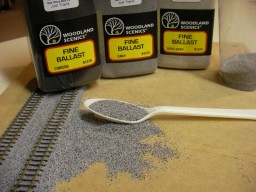 | 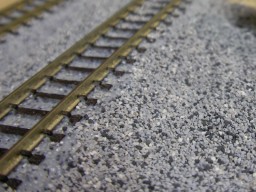 |
Of course, that presupposes you're interested in the granite-gray appearance that naked Unitrack offers. There are those that have deliberately sought different colors, but for those that just want to match, this is one possible way to do just that.



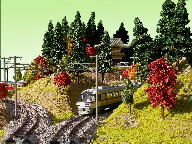
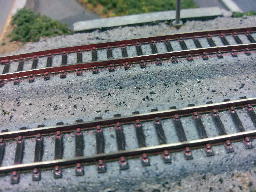
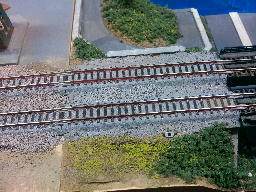
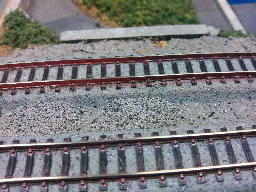
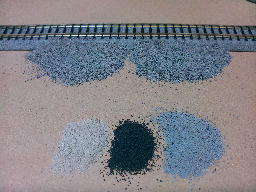
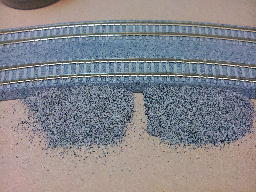
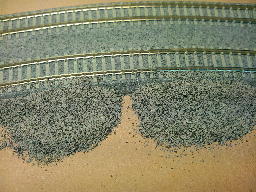
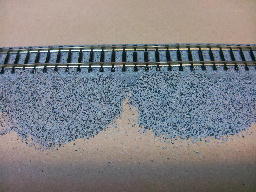
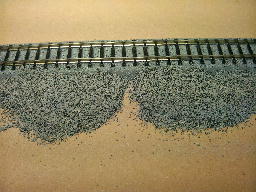
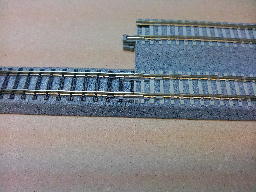

 Generate a QR code link to this page
Generate a QR code link to this page